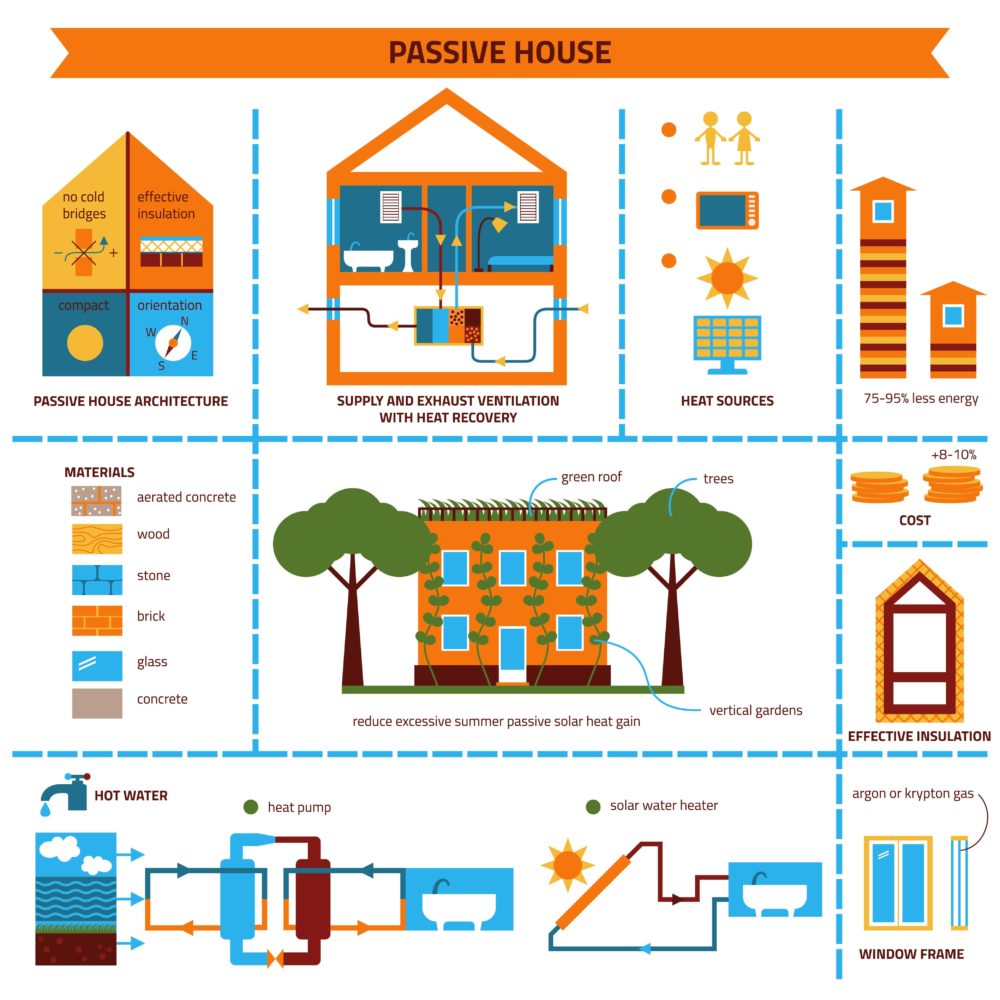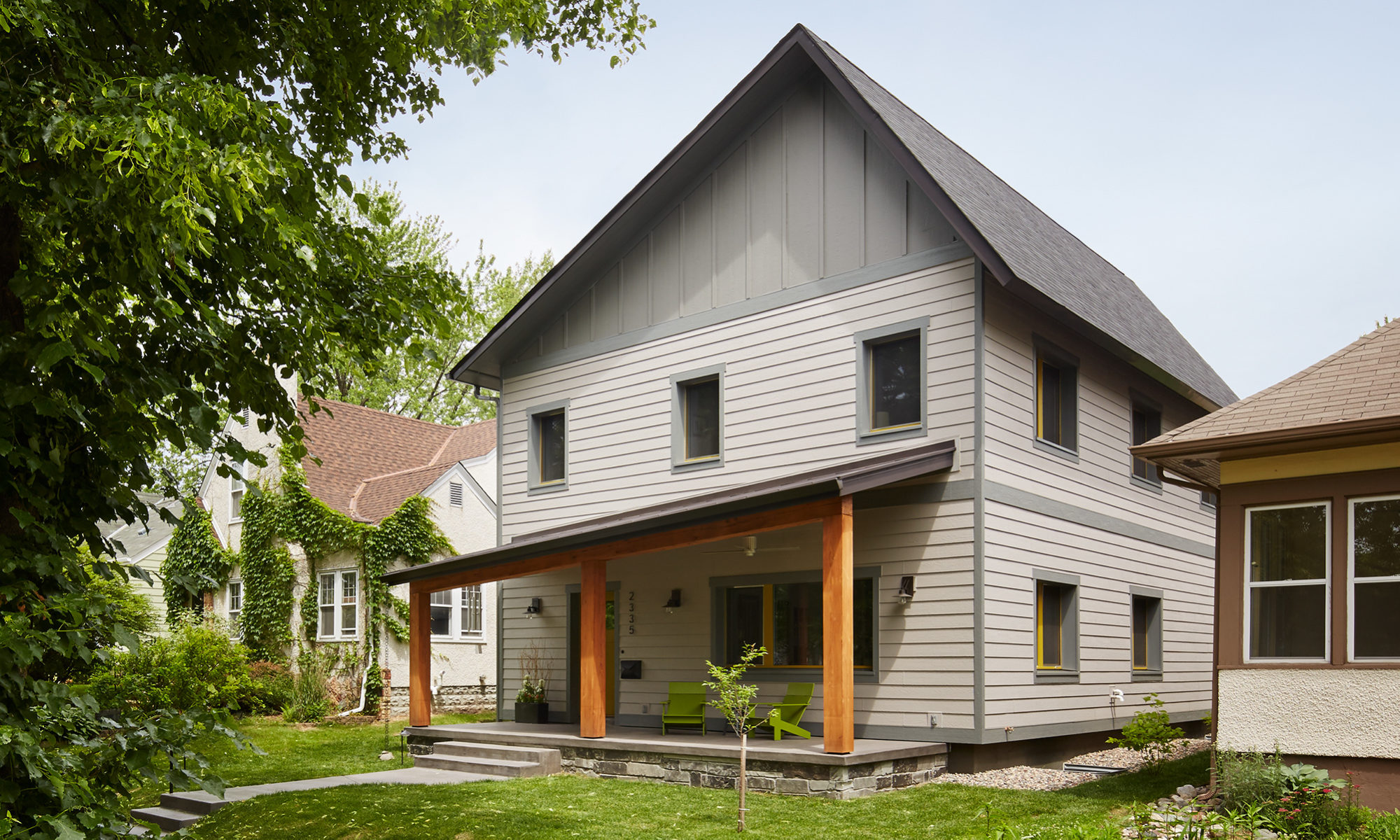Table Of Content
- Prefab Passive House & LEED ready kit homes - the future of home building?
- What Is an Easement in Real Estate? A Guide for Homebuyers
- A comfortable conclusion
- Start Your Passive Building Journey with Foundations Training
- Passive Building Foundations Training
- Top Tips for Designing a “Green” Home Office
- Passive house living

LEED certification is a globally recognized symbol of sustainability achievement and leadership. LEED certified buildings save money, improve efficiency, lower carbon emissions and create healthier places for people. They are a critical part of addressing climate change and meeting ESG goals, enhancing resilience, and supporting more equitable communities. Next, it is critical to control solar radiation to achieve optimal passive house design.
Prefab Passive House & LEED ready kit homes - the future of home building?
Because so much heat is recovered from the ventilation, and so little is lost or gained through the walls, not much “active” heating or cooling was needed when the Passive House concept was conceived, hence the original name Passivhaus or Passive House. However, as the concept has spread geographically, the climate has warmed, and new technologies have been developed. From programmable thermostats and smart lighting systems to energy-monitoring devices and automated appliances, these technologies empower homeowners to make informed decisions about their energy consumption and reduce waste. Many can be set to function at a lower capacity when occupants are out of the house or asleep, reducing energy use by 15% to 20%.
What Is an Easement in Real Estate? A Guide for Homebuyers
Designed for comfort with climate in mind: Exploring ‘passive' homes - NBC Boston
Designed for comfort with climate in mind: Exploring ‘passive' homes.
Posted: Tue, 03 Oct 2023 07:00:00 GMT [source]
Passive House homes and buildings offer superior indoor comfort due to consistent temperatures and good air quality. They also have the added benefit of reducing both external and internal noise due to the high levels of insulation. Measurements carried out in 114 Passive House apartments which were part of the CEPHEUS project showed average savings of approx.
A comfortable conclusion
PASSIVE HOUSE building principles have been around for more than 30 years and follow the 5x typical principles illustrated below. While some techniques and technologies were specifically developed for the "passive house" standard, others, such as superinsulation, already existed, and the concept of passive solar building design dates back to antiquity. There were other previous buildings with low-energy building standards, notably the German Niedrigenergiehaus (low-energy house) standard, in addition to buildings constructed to the demanding energy codes of Sweden and Denmark.
Start Your Passive Building Journey with Foundations Training
To achieve this level of performance, builders use intelligent passive design – for example ensuring the house is oriented and designed to make best use of sun and shade – together with the five passive house principles (see factbox). By combining individual measures any new building anywhere in the world can be designed to reach the Passive House Standard. The versatile Passive House Standard is also increasingly being used for non-residential buildings such as administrative buildings and schools.
Passive Building Foundations Training
The Passive House Institute (PHI) is an independent research institute that has played an especially crucial role in the development of the Passive House concept - the only internationally recognised, performance-based energy standard in construction. On and off site renewable energy production can be integrated creating Net Zero Energy (NZE) buildings. The idea is first to reduce the consumption drastically and then supplement with a small system. The PASSIVE HOUSE standard has been successfully implemented worldwide with tens of thousands of buildings in all different hot and cold climates. The Phius Alliance is Phius' membership arm, consisting of more than 1,000 industry professionals from across North America. Enjoy unmatched member benefits, including access to a nationwide network of passive building professionals, exclusive resources, and discounts on trainings and events.
In these types of homes, for example, stale air from bathrooms, kitchens, and other areas is exhausted out and replaced with fresh air. At least 75 percent of the heat from the exhaust air is transferred to the fresh air by a heat exchanger. Phius certifies windows and prefabricated panels (with more categories coming soon) with an eye specifically toward passive building applications. If you live in an old house, a cold, windy day often means layering on an extra sweater, checking the thermostat to make sure the heat's really on, and maybe even an argument or two with your roomie over who keeps turning the heat up (or down).
There’s no need for upgrades or retrofitting to improve comfort or efficiency. Since it is, however, possible to have too much of a good thing, passive buildings are often equipped with exterior rolling blinds, which lower and raise at the flip of a switch to block out heat and excess light. While many are taking steps to reduce their carbon footprint at home by keeping energy and water usage at a minimum with more eco-friendly appliances and HVAC equipment, others are exploring off-grid living, Earthship homes, and passive house design. Phius' mission is to combat climate change by making high-performance passive building the mainstream standard, in the quest for zero. We go beyond professional certification and standards to foster collaboration.
Passive house living
The process could involve building an outer shell around the entire house (wall and roof), but this isn’t always possible. There’s a more attainable standard called EnerPHit, a version of passive house design for retrofits of existing buildings. It, too, is a set of standards—including use of thermal insulation, high-quality windows, and ventilation with highly efficient heat recovery— that provide significant energy savings. In a tropical climate, passivhaus standard have proven to be helpful for ideal internal conditions by using energy recovery ventilation instead of heat recovery ventilation to reduce the humidity load of ventilation on the mechanical dehumidification system. Although dehumidifiers might be used, heat pump hot water heaters also will act to cool and condense interior humidity (where it can be dumped into drains) and dump the heat into the hot water tank. Passive cooling, solar air conditioning, and other solutions in passive solar building design have been studied to adapt the "passive house" concept for use in more regions of the world.
If a house is airtight and well insulated, the indoor environment will remain warmer (or cooler) for longer—much like a good thermos that maintains the temperature of whatever you put in it. Because they are so tightly sealed, Passive House buildings need well-designed ventilation. Continuous ventilation of fresh air and the evacuation of stale air from kitchens, bathrooms, and basements is necessary to prevent smells, air pollutants, CO2, and humidity from accumulating.
And while that’s true, Passive House criteria also prioritizes human comfort and health. Passive House methods reveal that comfort and healthy living are not luxuries, but are inextricably tied to providing fundamental building performance. Passive houses can be designed to work in a wide range of climates, although the specific techniques and technologies used may vary depending on the location and local climate. In some cases, additional heating or cooling systems may be required to maintain comfortable temperatures in extreme climates. One important goal of the Passive House Standard is to minimize the total primary energy consumption. I have seen passive house projects that use propane for heating, for example, and they are able to meet the requirement, but this is a bit of a cheat.
Creditnews Research found that in 2024, the middle class can afford an average home in just 52 of the top 100 metro areas in the United States. "But because we have been investing for so long, we had a nice pile of cash in our 401(k)." First known as the Armstrong Rubber Company Building then the Pirelli Tire Building, the iconic structure stood vacant for nearly two decades before architect and developer Bruce Redman Becker of Becker + Becker purchased the landmarked building in late 2019. To create a climate-conscious and aesthetically pleasing hotel that remained true to Bauhaus’s functional and minimalist roots.
The Passive House Standard offers a new level of quality pairing a maximum level of comfort both during cold and warm months with reasonable construction costs – something that is repeatedly confirmed by Passive House residents. The key is a balanced ventilation system, such as an HRV (Heat Recovery Ventilation) or ERV (Energy Recovery Ventilation). With balanced ventilation, fresh air entering the building is equal to the exhaust air exiting it. Passive House residences are not only energy-efficient and climate-friendly, but they are also comfortable because the interior walls are so well insulated and there are no drafts.
“With a shift toward achieving zero carbon, it’s about getting the fabric of building right,” says Beattie. Thermal bridges allow warm air to escape, effectively breaking the seal of a building’s envelope and making it less efficient. Examples of thermal bridging can include anything from a window-mounted air conditioning unit to insulation-breaching anchor bolts. The design of a new passive home begins with consideration for how the building should be positioned in order to capitalize on natural sun and shade exposure, and the attention to detail only strengthens from there. Study from Passive House California (PHCA) shows the benefits from applying the International Passive House Construction Standard for new buildings and retrofits when compared to code design.

The eventual construction of four row houses (terraced houses or town homes) were designed for four private clients by the architectural firm Bott, Ridder and Westermeyer. The first Passivhaus residences were built in Darmstadt in 1990, and occupied by the clients the following year. "The big knob you can turn is cost of living," says Tommy Sikes, a certified financial planner and founder of Traveltirement, where he highlights affordable homes in France and Italy through a newsletter and social media channels.
In a standard building, heat is usually lost through small openings like cracks, inefficient windows, or overall poor insulation. Heat flows from hot to cold areas which are known as the “thermal bridge.” A thermal bridge acts as a heat highway that leads straight to the outside of the building causing inconsistent internal temperatures. The only real required maintenance is changing the filters in the ventilation system, which is an easy task since most systems used in passive homes will tell you when the filter is due for cleaning or replacing. How often this is required will vary — if you’re a heavy indoor smoker, you’ll likely need to change the filter every three months — but under average living conditions, once every six to eight months is realistic. Air quality is high, temperature variation is minimal, and because they’re so well-insulated, passive homes tend to be very quiet.

No comments:
Post a Comment